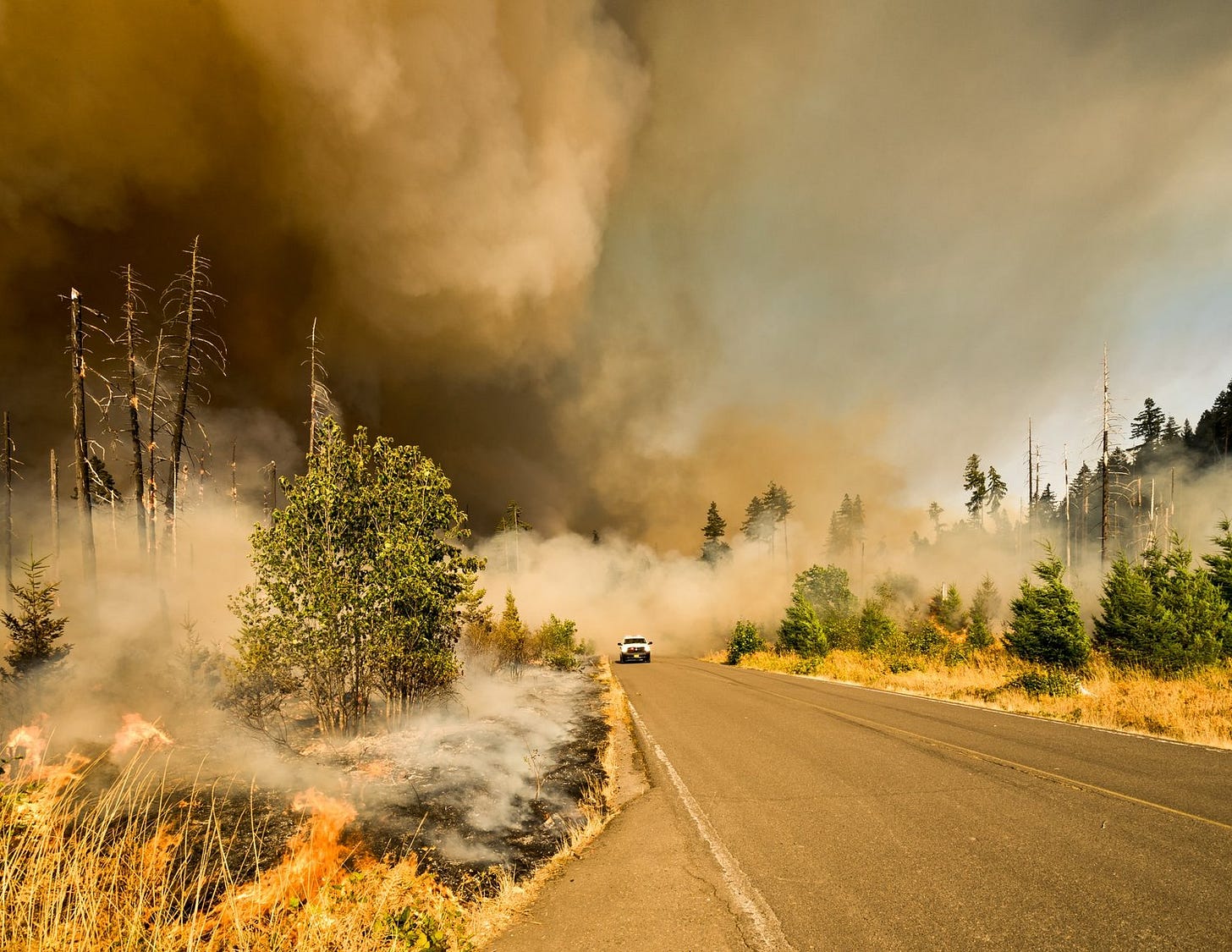Some time ago, in the context of our investment in Clarity, I wrote briefly about air pollution. Thanks in part to our involvement with Clarity, I’ve learned a great deal more about air pollution. It has served only to increase my sense of urgency.
Amasia Fellow Samantha Snedeker and I wrote recently about the recent IPCC report (or, to be more precise, the “Working Group 1 Contribution”—the IPCC could use some report naming help, I think). A key observation in that essay was that we need to focus more on local climate extremes when we think about mitigation. All climate mitigation is local, if I may coin a phrase. Sometimes by talking in averages or in terms of large geographic areas, we lose sight of the fact that mitigation is a peculiarly local item.
The bottom line is that air pollution—its causes, effects, and solutions—differs significantly from place to place. Yes, this is a statement of the bleeding obvious, but the point could use some publicity!
This line of thinking led me, with the help of my co-author and Amasia Fellow Ines Toa, to write again about air pollution, which is responsible for an estimated seven million premature deaths and the loss of millions more healthy years of life per year.
The need to act locally is pretty easily seen if we compare two examples of extreme air pollution: wildfire season in the United States and air pollution in Bengaluru, India.
Climate change worsens the intensity and frequency of wildfires. Western United States has witnessed wildfires raging across its landscape, burning hundreds of thousands of acres and forcing thousands to evacuate. Wildfire smoke contains many harmful pollutants, among which includes particulate matter. While the Western United States typically enjoys relatively clean air, this can change rapidly during wildfire events, with air quality potentially deteriorating significantly and unexpectedly.
If confronted with wildfire smoke, immunocompromised people become more susceptible to respiratory infections, including Covid-19. Studies have shown a link between US wildfire pollution and higher Covid-19 cases. Maribel Villanueva, a daycare worker and single mom, developed a cough from inhaling wildfire smoke and eventually passed away soon after from respiratory failure and Covid-19. Maribel was just one of 1,000 Covid-19 deaths and 26,000 cases linked to high levels of PM 2.5 exposure in California between March and December 2020.
Now, if we traveled 9000 miles to the other side of the globe to Bengaluru, India, we would also experience extreme air pollution, but with very different causes and effects. India is one of the most polluted countries on earth, with Bengaluru now possessing the very dubious honor of being the third worst city affected by air pollution last year. The statistics are jarring: Bengaluru saw an 80 percent increase in respiratory illness between 2015 and 2020, air pollution reduced life expectancy by 5.25 years, and one in eight deaths is caused by air pollution.
But if we tried to apply the same strategy for clean-up in Bengaluru as we might in California, our efforts would fail. We’re now in bleeding obvious territory, but let’s say it anyway—that’s because the city’s worsening air quality can be attributed not to wildfires, but to transportation issues. As the public transportation system failed to meet surging demand, people have resorted to expanded use of cars, motorcycles and scooters—all of which have greatly increased fuel consumption (and thus air pollution).
Existing monitoring systems are unable to provide a comprehensive view of the city’s air quality, with only 10 official air quality monitoring stations connected to the Central Pollution Control Board in a city of over 11 million. Without good data, it becomes difficult to identify the problem and develop targeted solutions—and as recently as 2018, roughly 45% of countries in the world did not report any air quality monitoring data whatsoever (WHO).
So what can we do about it? We can start by leveraging new technology to measure air quality at the local level—the scale at which it is relevant to human health.
Low-cost sensors have been deployed in both cases to provide local and real-time air pollution data. There are many benefits to having accurate data: individuals become more cognisant of air quality standards, communities are empowered to pressure the government for better policies to address air pollution, policymakers are mobilized to assess mitigation measures and develop infrastructure that delivers cleaner air, and big polluters are held accountable to design appropriate emissions cutback initiatives.
In short: air pollution, like climate change, is a global issue that requires local data, local solutions, and local behavior change. And the air quality ‘co-benefits’ of reducing fossil fuel use are generally so valuable from a public health standpoint that they exceed the cost of climate action, often many times over.
More Readings
Causes of Air Pollution
Composition of Air Pollution
Carbon dioxide levels are at a record high. Here's what you need to know.
Air Quality Measurements Series: Particulate Matter
Air Quality Measurements Series: Nitrogen Dioxide
Impacts of Air Pollution
Environmental and Health Impacts of Air Pollution: A Review
Localized Cases of Air Pollution
How low-cost air sensors protect public health during wildfire season
How community-based air quality monitoring is helping Bengaluru fight air pollution
Air Monitoring
Best practices when deploying low-cost air sensors in the urban environment


